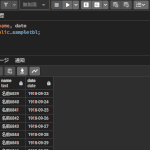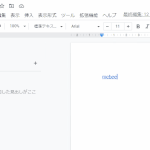mac ターミナル上でカレンダーを確認する

macで、コマンドを実行して、ターミナル上でカレンダーを確認する手順を記述してます。
環境
- ProductName: macOS
- ProductVersion: 11.5.2
- BuildVersion: 20G95
カレンダーを確認
カレンダーを確認するには「cal」を使用します。
cal実行結果

オプションは、以下となります。
man cal
<出力結果>
CAL(1) BSD General Commands Manual CAL(1)
NAME
cal, ncal -- displays a calendar and the date of Easter
SYNOPSIS
cal [-3hjy] [-A number] [-B number] [[month] year]
cal [-3hj] [-A number] [-B number] -m month [year]
ncal [-3hjJpwy] [-A number] [-B number] [-s country_code] [[month] year]
ncal [-3hJeo] [-A number] [-B number] [year]
ncal [-CN] [-H yyyy-mm-dd] [-d yyyy-mm]
DESCRIPTION
The cal utility displays a simple calendar in traditional format and ncal offers an alternative layout, more options
and the date of Easter. The new format is a little cramped but it makes a year fit on a 25x80 terminal. If arguments
are not specified, the current month is displayed.
The options are as follows:
-h Turns off highlighting of today.
-J Display Julian Calendar, if combined with the -e option, display date of Easter according to the Julian Calen-
dar.
-e Display date of Easter (for western churches).
-j Display Julian days (days one-based, numbered from January 1).
-m month
Display the specified month. If month is specified as a decimal number, it may be followed by the letter `f'
or `p' to indicate the following or preceding month of that number, respectively.
-o Display date of Orthodox Easter (Greek and Russian Orthodox Churches).
-p Print the country codes and switching days from Julian to Gregorian Calendar as they are assumed by ncal. The
country code as determined from the local environment is marked with an asterisk.
-s country_code
Assume the switch from Julian to Gregorian Calendar at the date associated with the country_code. If not spec-
ified, ncal tries to guess the switch date from the local environment or falls back to September 2, 1752. This
was when Great Britain and her colonies switched to the Gregorian Calendar.
-w Print the number of the week below each week column.
-y Display a calendar for the specified year.
-3 Display the previous, current and next month surrounding today.
-A number
Display the number of months after the current month.
-B number
Display the number of months before the current month.
-C Switch to cal mode.
-N Switch to ncal mode.
-d yyyy-mm
Use yyyy-mm as the current date (for debugging of date selection).
-H yyyy-mm-dd
Use yyyy-mm-dd as the current date (for debugging of highlighting).
A single parameter specifies the year (1-9999) to be displayed; note the year must be fully specified: ``cal 89'' will
not display a calendar for 1989. Two parameters denote the month and year; the month is either a number between 1 and
12, or a full or abbreviated name as specified by the current locale. Month and year default to those of the current
system clock and time zone (so ``cal -m 8'' will display a calendar for the month of August in the current year).
Not all options can be used together. For example ``-3 -A 2 -B 3 -y -m 7'' would mean: show me the three months around
the seventh month, three before that, two after that and the whole year. ncal will warn about these combinations.
A year starts on January 1.
Highlighting of dates is disabled if stdout is not a tty.
SEE ALSO
calendar(3), strftime(3)
HISTORY
A cal command appeared in Version 5 AT&T UNIX. The ncal command appeared in FreeBSD 2.2.6.
AUTHORS
The ncal command and manual were written by Wolfgang Helbig <helbig@FreeBSD.org>.
BUGS
The assignment of Julian-Gregorian switching dates to country codes is historically naive for many countries.
Not all options are compatible and using them in different orders will give varying results.
BSD March 14, 2009 BSD-
前の記事

WinSCP パスの変更メニューを開くショートカットキー 2022.10.14
-
次の記事

Dart リスト(配列)から値を抽出する 2022.10.14








コメントを書く